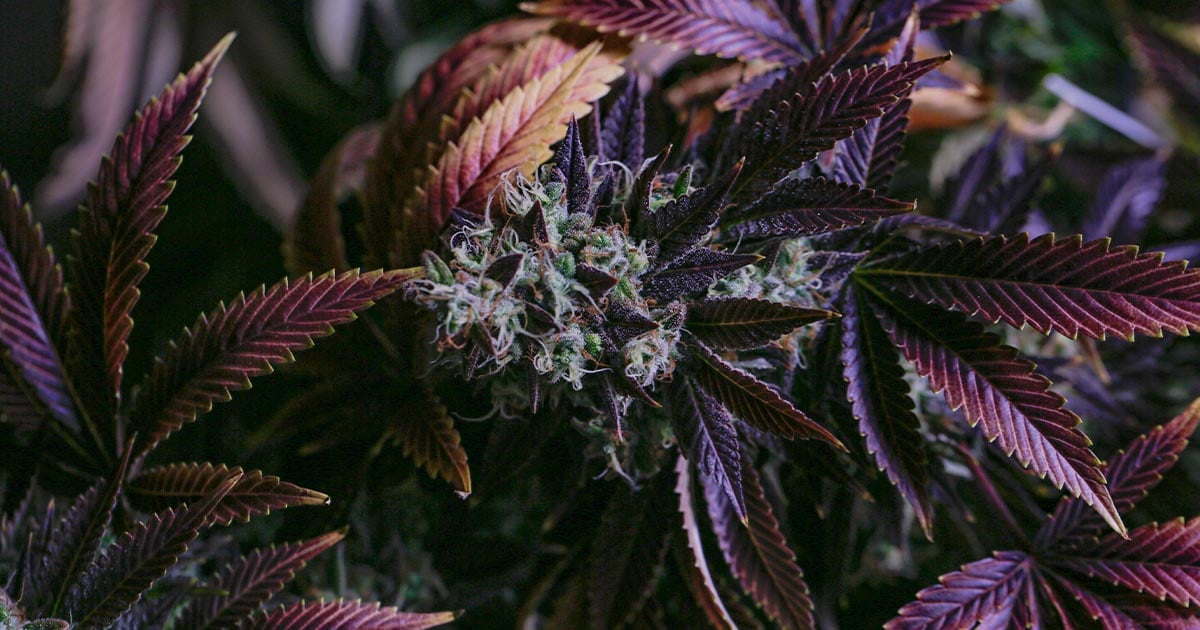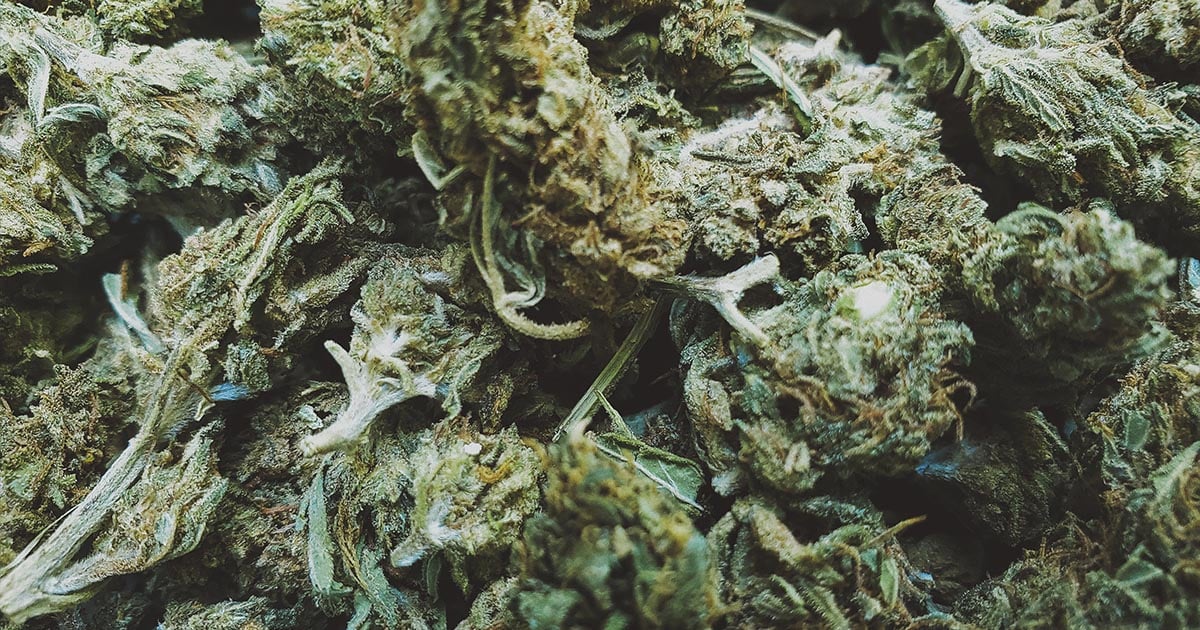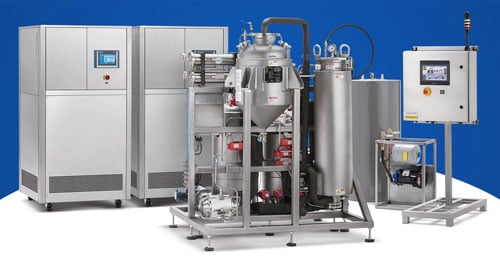
Hydrocarbons are the ultimate solvent in the extract market for creating a high-quality concentrate product. Strong enough to pull massive amounts of cannabinoids from any quality cannabis and hemp biomass and gentle enough to keep the sensitive terpenes intact in the end product.
With such a high reward, there is bound to be some risks throughout the production process. Even under the strictest building, electrical, and fire codes, there is plenty of room for error when processing, purging, and disposing of cannabis and hemp biomass.
Safety should always be a priority when processing raw cannabis and hemp biomass. Sometimes, letting your guard down just once during the production process could spell disaster. Protect your staff and business with our pro safety tips for processing raw material and handling the spent biomass.
Non-Classified Thermocouple Readers
Extraction technicians use thermocouple sensor technology products to get an accurate measurement of temperature during production. Using a thermoelectric effect, these temperature sensors can measure temperatures in gases, vapors, and fluids in your sealed and pressurized containment vessels.
When dealing with high pressures and flammable vapors, it is critical to invest in classified equipment meant to handle the risk of ignition or worse, explosion, in a hazardous production area. Using non-classified thermocouple readers is, unfortunately, becoming an increasingly common practice among licensed hemp and cannabis extraction facilities.
In hazardous work areas, Class 1-certified electrical equipment is tested to function in work areas handling flammable gases and liquids. Under Class 1, Division 1 and Division 2 classifications, thermocouple readers can handle the hazards of a BHO lab:
- Division 1 rated equipment is designed for severe conditions where the hazardous environment is always or often present, or becomes present during regular servicing or repair.
- Division 2 equipment is designed where hazardous environments are present only under abnormal conditions, such as in the case of accidental spills or ventilation failure. Division 2 includes storage/handling facilities, where the solvent is kept in sealed or closed systems.
When designing a BHO lab, ensure all electrical devices, including thermocouple readers are properly classified, meaning they are completely safe to use in hazardous work areas.
With properly classified devices, ignition sources are accounted for even in a worst-case scenario such as short circuiting or gross negligence.
Unfortunately, many licensed extraction facilities are overlooking the importance of proper certification and installation of all electrical equipment (even small devices such as thermocouple readers) in the lab.
Shop Vac in Extraction Lab
Standard shop vacs may be helpful in construction and woodworking sites, but they are not built for use in a hydrocarbon extraction lab. Designed to suck up dirt, debris, and other building site material, shop vacs are not ideal for use anywhere near hazardous areas.
Even if you use the shop vac outside of the hazardous area with a long extension hose, it is a bad idea. When cleaning the extraction room with a shop vac, technicians may mistakenly believe that just because the vacuum motor is outside of the hazardous area, the process is safe.
Similar to problems with non-rated thermocouple readers, standard shop vacs are not designed for use around such a flammable environment. Everything from the hoses to its motor to its cartridge filter can ignite a spark.
Most shop vacs hoses are made from plastic. If any dust travels through, the spinning dust particles inside the tube can create static electricity. Since most vacuums are not grounded, the static electricity can be dispersed inside the vacuum or the dusty atmosphere.
Adding fuel to the flame is a shop vac’s brushed DC motor. Over time, the wear and tear from the contacts can create a spark every time it is used. Mix that with the flammable vapors from your solvent and spent biomass and you have got yourself a recipe for an explosion.
Spent Biomass: How to Handle Cannabis and Hemp Biomass

Even after you have successfully processed your cannabis or hemp biomass and converted it to a light-colored and highly potent concentrate, it is no time to let your hair down. Residual vapors (such as butane or even ethanol) from your spent biomass can offgas into the lab unbeknownst to your operator.
In the case of hydrocarbon extraction, spent biomass that has not fully been purged of the solvent can evaporate in an ominous and invisible vapor all around. Based on secondhand reports, operators have been known to use tools with non-classified electric motors near the spent biomass. The spark from the motor of any non-C1D1 rated power tool provides the perfect ignition source for the flammable vapors in your hemp and cannabis processing facility.
While the operators were left relatively unscathed with no injuries or property damage after a small explosion due to mishandling of the spent biomass, other technicians may not be so lucky. Adopting strict safety protocols in the lab is a regulatory requirement of every legal state and should be common practice.
Even after an operator has been trained on proper safety procedures, maintain a written and clearly visible resource containing standard operating procedures for handling the biomass from start to finish. If needed, hiring a quality control specialist in your operation can help you stay on top of risk reduction.
It is important to spend the extra time developing and following procedures for safely handling spent biomass. Handling spent biomass may seem like a rote activity, but operators should still remain focused and follow safe disposal procedures of the spent material.
When removing the spent biomass that has been extracted, avoid using a non-classified vacuum. Instead, a material sock for your biomass allows you to load and unload without the need to use powered tools. Except for a final wipe with a clean cloth at the bottom of the column, there is not much clean-up required for handling spent hemp and cannabis material.
Safety protocols should also include the purging phase where vacuum ovens nearly eliminate any residual solvent from the spent biomass. As a result, you have got yourself a significantly less hazardous waste material that may be sold for a variety of industrial and agricultural purposes. You would be surprised at the many possible uses of spent hemp and cannabis that do not involve CBD or THC.
If you could not tell, cannabis and hemp biomass extraction is essentially a fuel factory. Luckily, the spent hemp and cannabis materials have plenty of value as biofuel. Hemp biomass, in particular, makes an excellent biofuel. Spent biomass can either be converted to a biofuel (cellulose ethanol) at a refinery or can be pressed as heat pellets for fuel production.
Hemp biofuel pellets offer a sustainable alternative to the standard wood pellets. As far as biofuels go, hemp pellets have similar combustion qualities as wood without the corrosive qualities of grass pellets. While every market has its own regulatory limitations, there is bound to be use for your spent hemp material.
Pressurized Piping and a Failed Pressure Gauge
When dealing with liquefied petroleum gases (LPG), consider the high internal pressures inside your system and its components. During the production process, you will need to maintain an accurate assessment of pressures in the biomass, media, and collection tank.
The type of pressurized piping and pressure gauge used is critical to containing gases and accurately measuring pressure inside the containment vessels.
During critical maintenance and cleaning procedures, accurate pressure measurement determines the safety of the equipment. For instance, it is a matter of life or death knowing the exact pressure of a vessel when an extraction technician is removing the fastening device for an extraction vessel cap.
When dealing with extracted hydrocarbon, ensure you use a pressure gauge that reads high enough to account for the pressures used in your process. Investing in a compatible pressure gauge, piping, and columns can help you maintain a precise measurement of the pressure in your system at all times.
Ensure you use piping designed to operate at a pressure high enough for the solvents or solvent blend you are using. Butane has a very low vapor pressure leading to systems being designed to operate at relatively low psig with pressure relief set at a slightly higher psig. However, avoid mixing your solvents with propane if you have not specifically designed your system to handle the higher vapor pressures. While the pressure relief valves protect the equipment, the hydrocarbon vapors can be released if the solvent vapor pressures are too high for the equipment.
Above all, invest in peer-reviewed equipment based on your market regulations that has included an evaluation, especially of the pressure vessel and pressure relief systems. In many cases, buying used equipment affords you a piece of equipment that does not come with any pressure relief.
Biomass Processing Safety Through Automation
As the technology catches up to the demand for derivative CBD and THC products, innovative automated systems are the pinnacle of hydrocarbon, ethanol, and CO2 safety.
As the most obvious benefit, removing operators from hazardous areas significantly reduces the risk of injury. Nearly eliminating the need for frequent operation inside the hazardous area, automation not only keeps operators safe, but allows them to focus on other important tasks.
In addition, built-in engineering controls such as emergency stop switches, extraction booth interlocks, and control system limits allow operators to remotely handle a potential crisis with a system's automated alerts.
If the ventilation goes out or there is an unsafe level of flammable vapors in the hazardous work area, an automated system will alert the operator, at which point all operations can be shut down.
Automated Solutions for Hydrocarbon Extraction Safety
Save yourself time, money, and headaches by investing in a fully-automated BHO extraction system. While hydrocarbon extraction comes with its dangerous risks, an approved lab facility that uses peer reviewed closed-loop equipment nearly eliminates the risk for fire or explosions.
Crafting high quality concentrate products from biomass does not have to come at the expense of your staff’s safety and your equipment’s structural integrity. Luna Technologies IO Extractorwas designed with safety, quality, and consistency in mind. Peer-reviewed in every legal cannabis state, you can start your business from any legal state and scale as you please.


